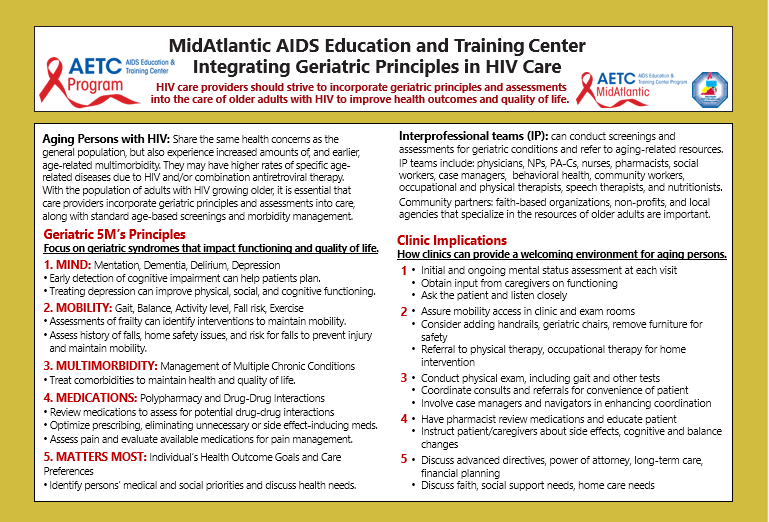Resources : Clinical Tools and Materials
Pocket Guides
These pocket guides were created by Dr. Linda Frank and staff, and are available for download. For hard copies please contact us
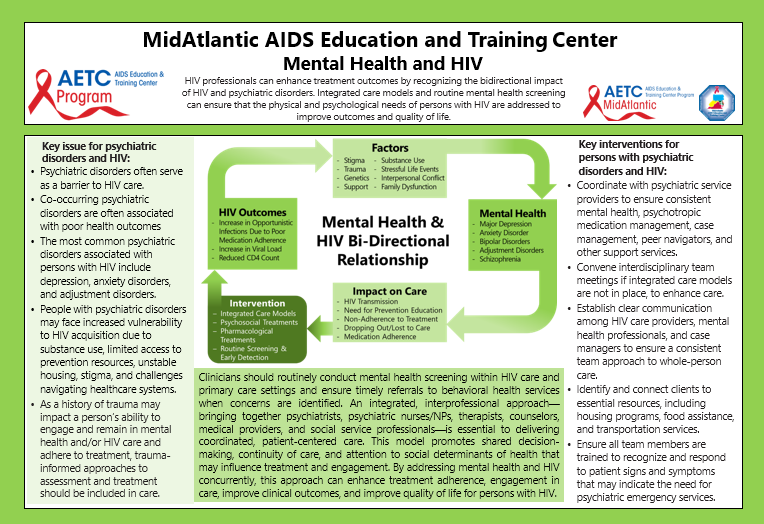 |
HIV professionals can enhance treatment outcomes by recognizing the bidirectional impact of HIV and psychiatric disorders. Integrated care models and routine mental health screening can ensure that the physical and psychological needs of persons with HIV are addressed to improve outcomes and quality of life. |
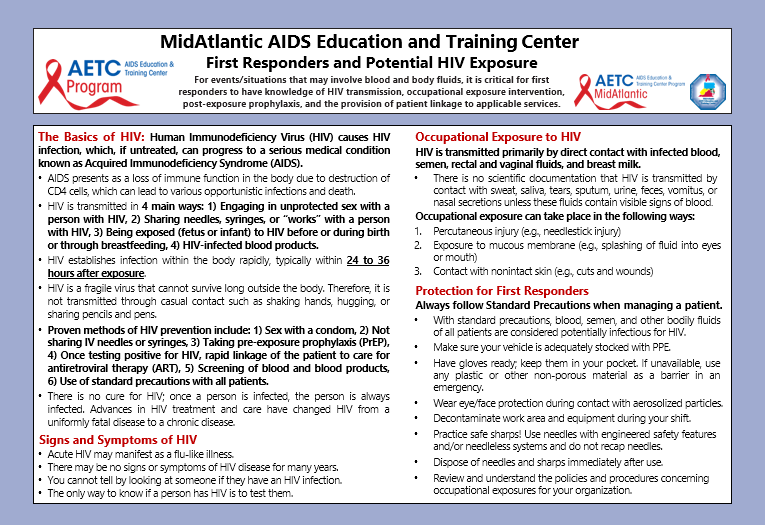 |
First Responders and Potential HIV Exposure For events/situations that may involve blood and body fluids, it is critical for first responders to have knowledge of HIV transmission, occupational exposure intervention, post exposure prophylaxis, and the provision of patient linkage to applicable services. |
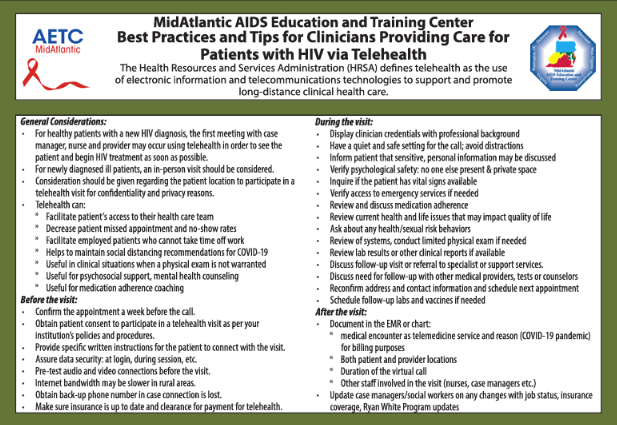 |
Best Practices and Tips for Providing Telehealth Care The Health Resources and Services Administration (HRSA) defines telehealth as the use of electronic information and telecommunications technologies to support and promote long-distance clinical health care. This guide reviews best practices and tips for clinicians providing care for patients with HIV via telehealth. It includes a sample script for starting and ending telemedicine and other considerations for before, during, and after the visit. |
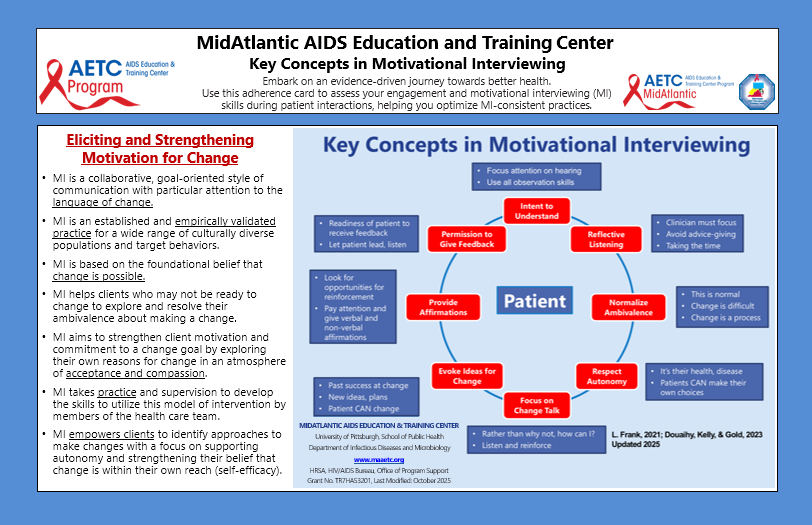 |
Key Concepts in Motivational Interviewing Use this adherence card to assess your engagement and motivational interviewing (MI) skills during interactions, aiding you in optimizing MI-consistent practices to promote HIV outcomes. |
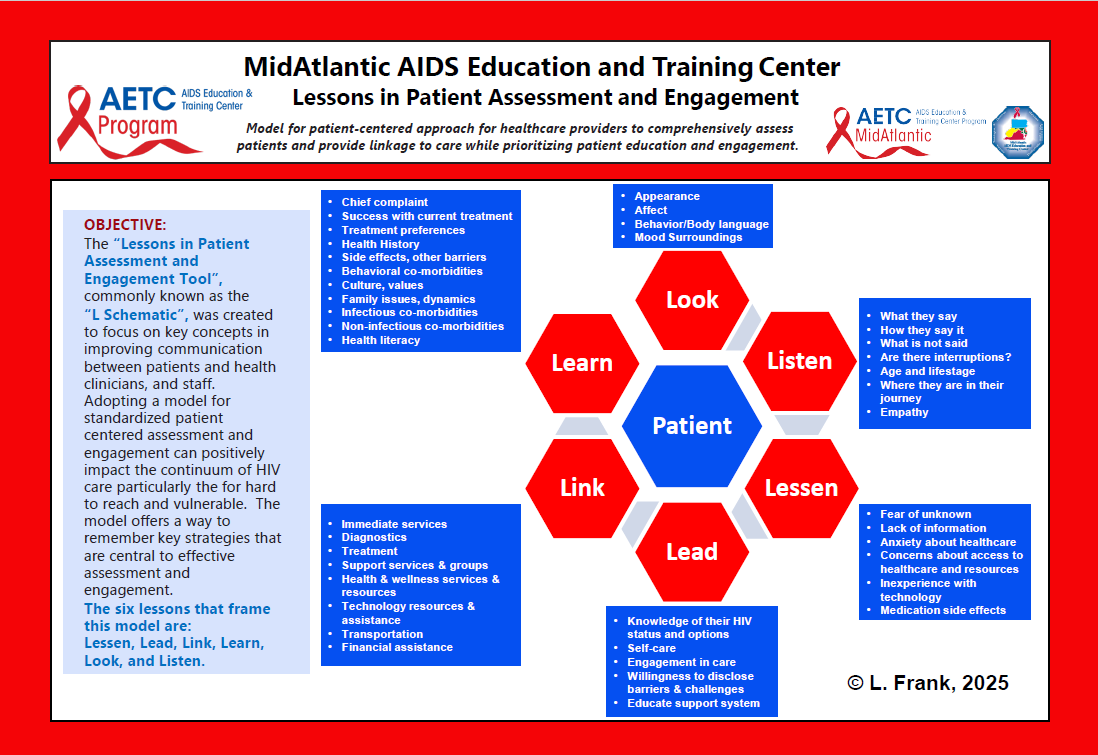 |
Lessons in Patient Assessment and Engagement This resource provides information on key concepts for improving communication between patients, health clinicians, and staff. Adopting a model for standardized patient-centered assessment and engagement can positively impact the continuum of HIV care, particularly for hard-to-reach and vulnerable populations. This model offers a way to remember key strategies that are central to effective assessment and engagement. |
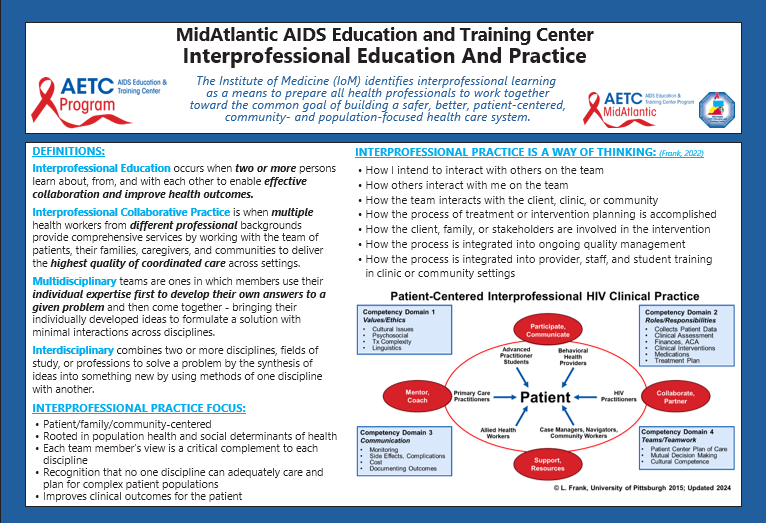 |
Interprofessional Education and Practice The Institute of Medicine (IoM) identifies interprofessional learning as a means to prepare all |
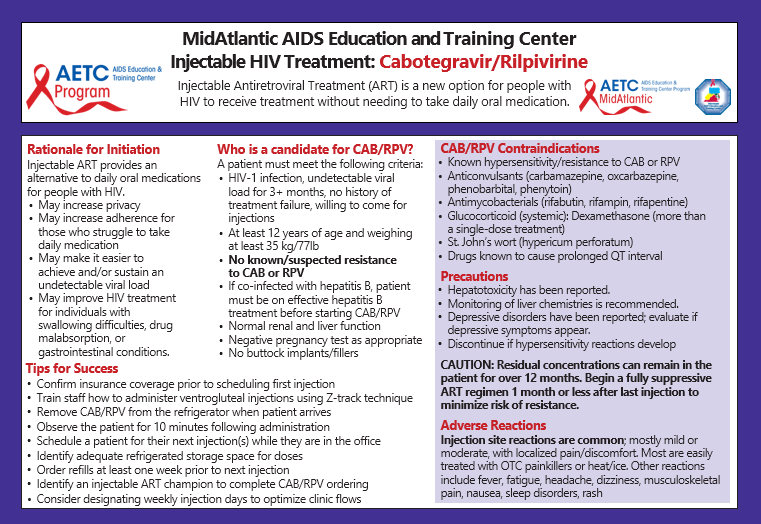 |
Injectable HIV Treatment: Cabotegravir/Rilpivirine; This resource provides information on how Injectable Antiretroviral Treatment (ART) is a new option for people with HIV to receive treatment without needing to take daily oral medication. |
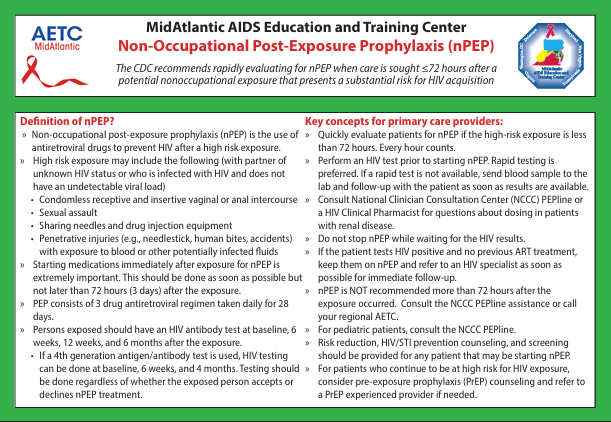 |
Non-Occupational Post-Exposure Prophylaxis (nPEP) This resource provides information related to the definition of nPEP, key concepts for primary care providers, and a summary nPEP procedure. |
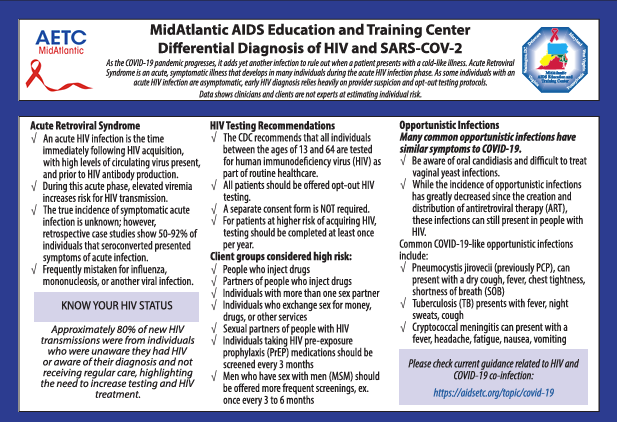 |
Differential Diagnosis of HIV and SARS-COV-2 As the COVID-19 pandemic progresses, it adds yet another infection to rule out when a patient presents with a cold-like illness. Acute Retroviral Syndrome is an acute, symptomatic illness that develops in many individuals during the acute HIV infection phase. As some individuals with an acute HIV infection are asymptomatic, early HIV diagnosis relies heavily on provider suspicion and opt-out testing protocols. This resource reviews HIV testing recommendations, common COVID-19 like opportunistic infections, and provides a chart showing clinical presentation comparisons of HIV and COVID-19. |
|
|
Integrating Geriatric Principles in HIV Clinic HIV care providers should strive to incorporate geriatric principles and assessments into the care of older adults with HIV, thus improving health outcomes and quality of life. This pocket guide reviews the geriatric 5M principles, the clinical implications, and the importance of incorporating geriatric assessments. |
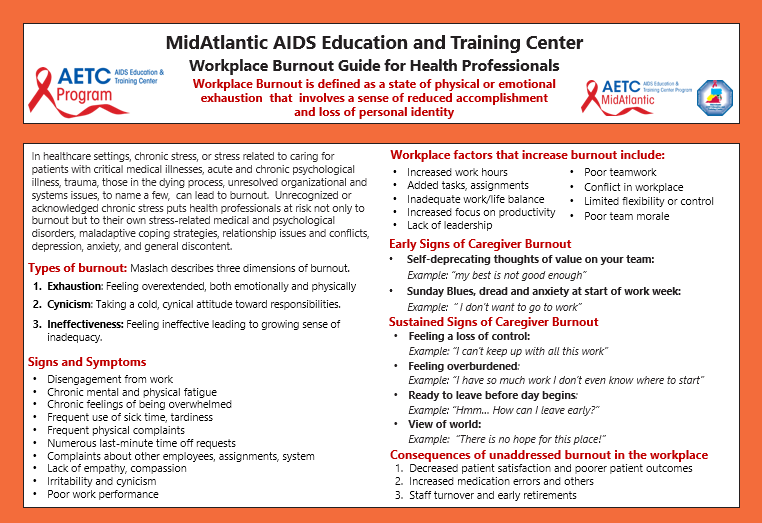 |
Workplace Burnout Guide for Health Professionals Burnout is defined as a state of physical or emotional exhaustion that involves a sense of reduced accomplishment and loss of personal identity. This guide discusses the types of burnout, the early signs of burnout in caregivers, consequences of not addressing burnout and more. It also offers ideas, methods, and interventions for burnout and related psychological disorders. |
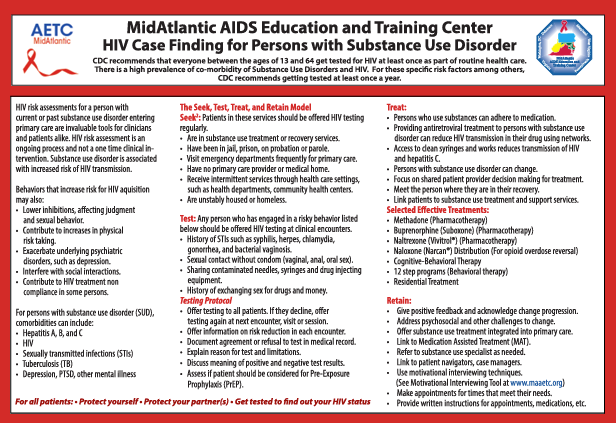 |
HIV Case Finding for Persons with Substance Use Disorder This resource provides information related to HIV testing and risk assessment for patients who have a history of substance use. Substance misuse and substance use disorders are associated with an increased risk of HIV transmission. While everyone should be tested at least once in their lifetime, patients with a history of substance use should undergo HIV testing regularly and consider biomedical prevention like PrEP or PEP. This pocket guide details these clinical considerations, as well as provides a clear drug and alcohol risk assessment script to aid the clinician in discussing risks and harm reduction with their patients. |
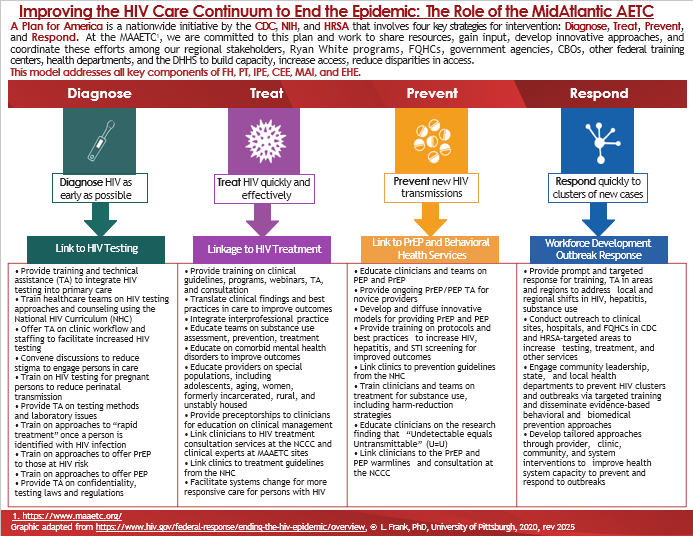 |
EHE Key Strategies Infographic Ending the HIV Epidemic is a national initiative focusing efforts in 48 counties, Washington, D.C., San Juan, PR, and 7 states that have a substantial rural HIV burden, accounting for over half of the new HIV diagnoses in the U.S. This infographic demonstrates the role of the MAAETC in the Ending the HIV Epidemic Initiative. |
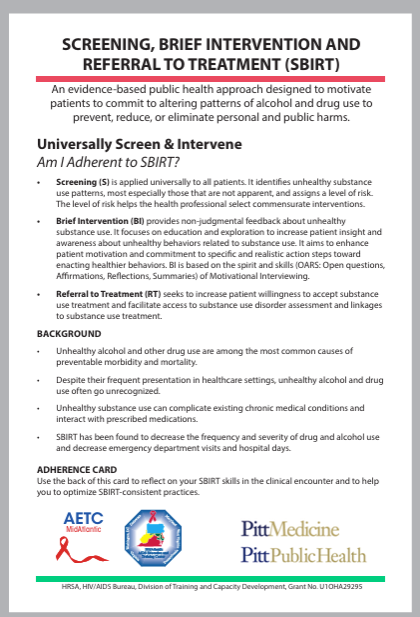 |
SBIRT - Screening, Brief Intervention and Referral to Treatment An evidence-based public health approach designed to motivate patients to commit to altering patterns of alcohol and drug use to prevent, reduce, or eliminate personal and public harms. |




